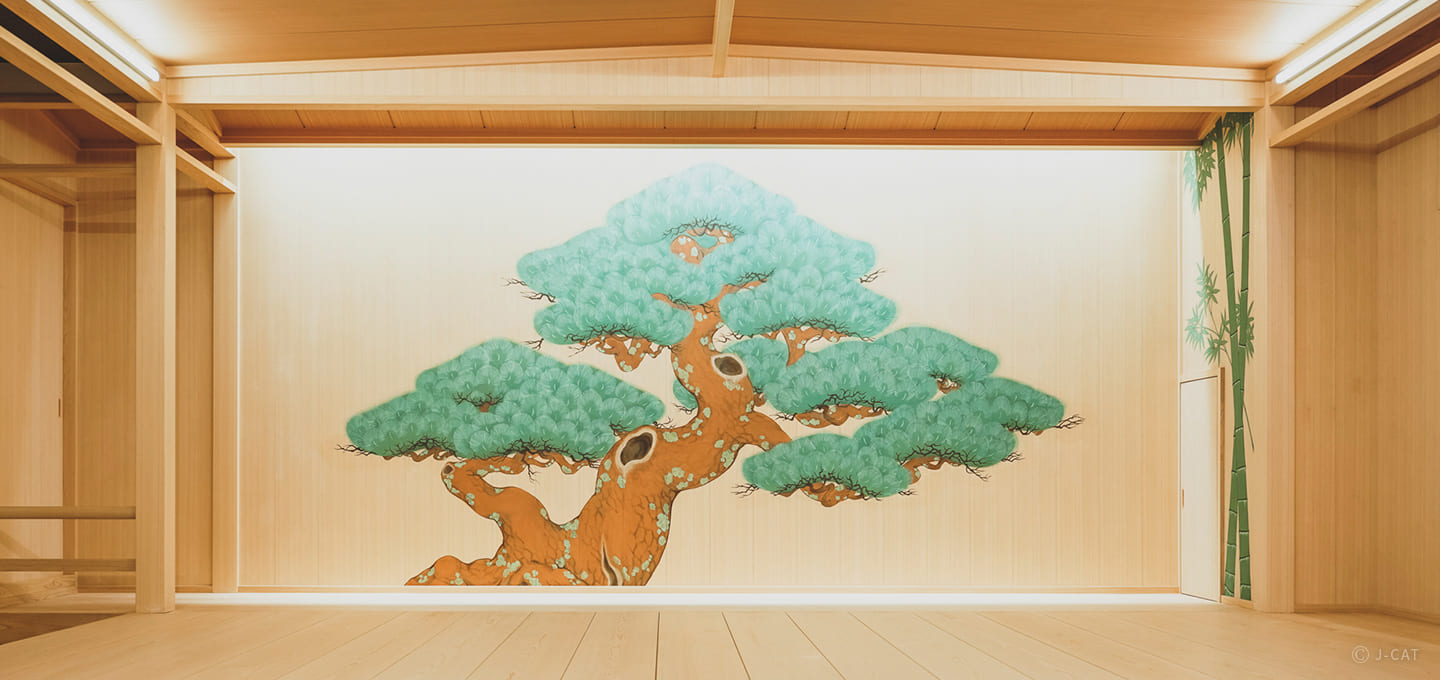
Special Experience
Tokyo
Experience Noh with Actor Keizo Nagayama – Private Show & Practice
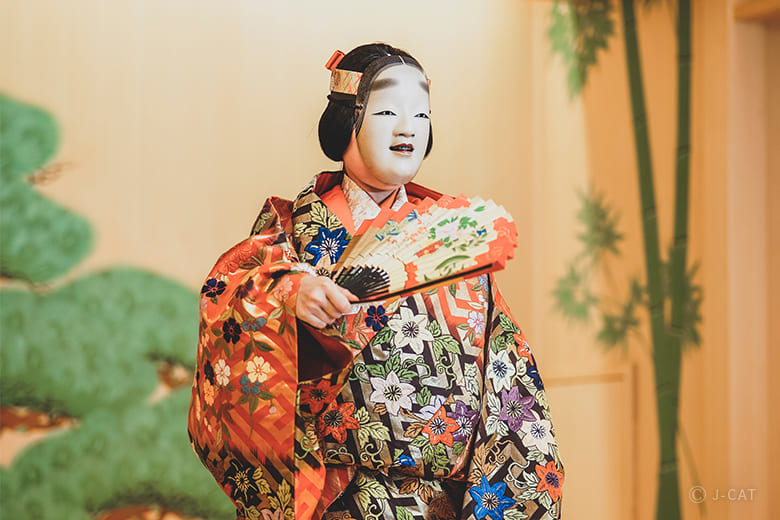
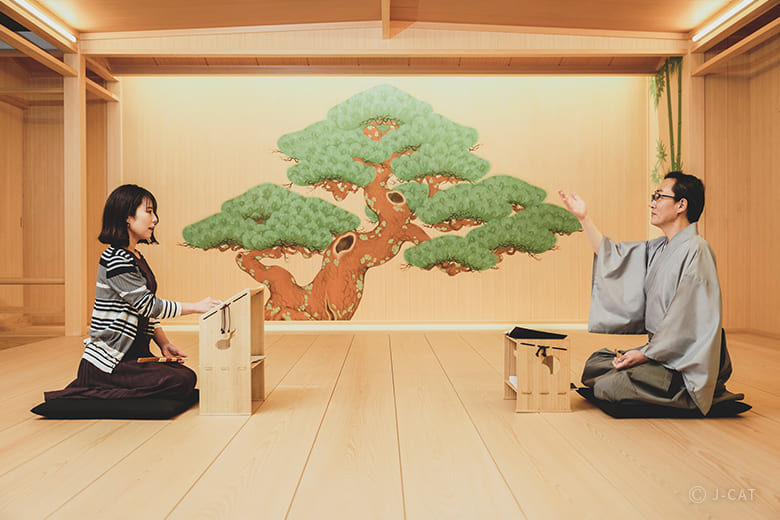
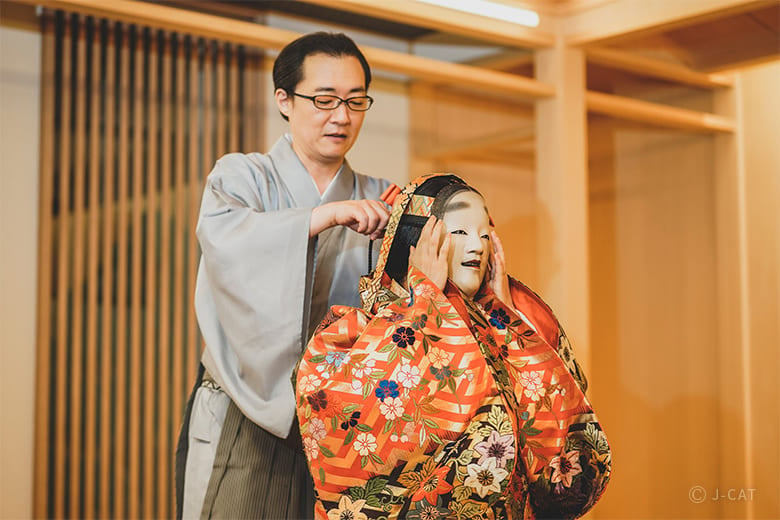
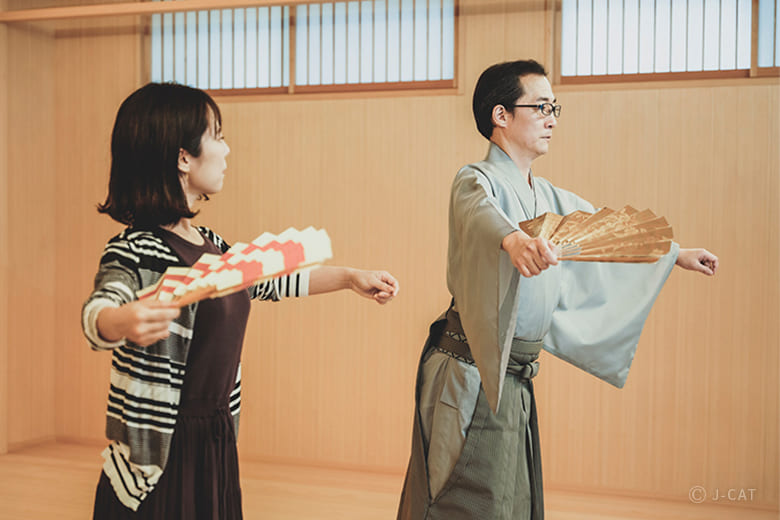
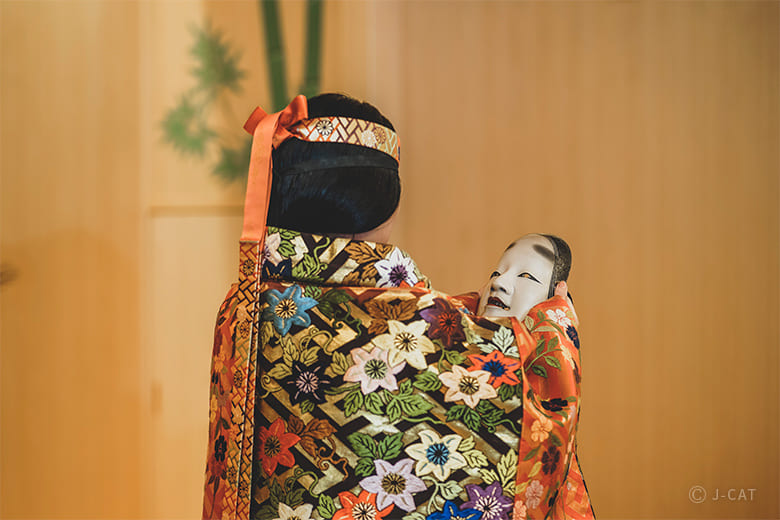
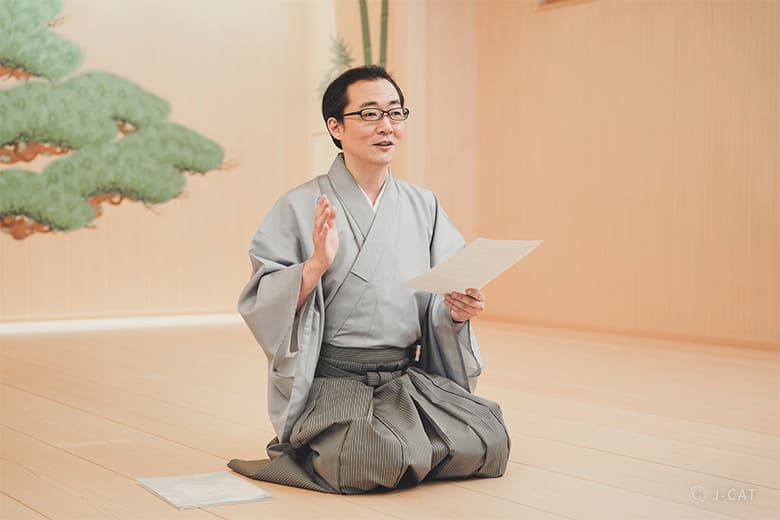
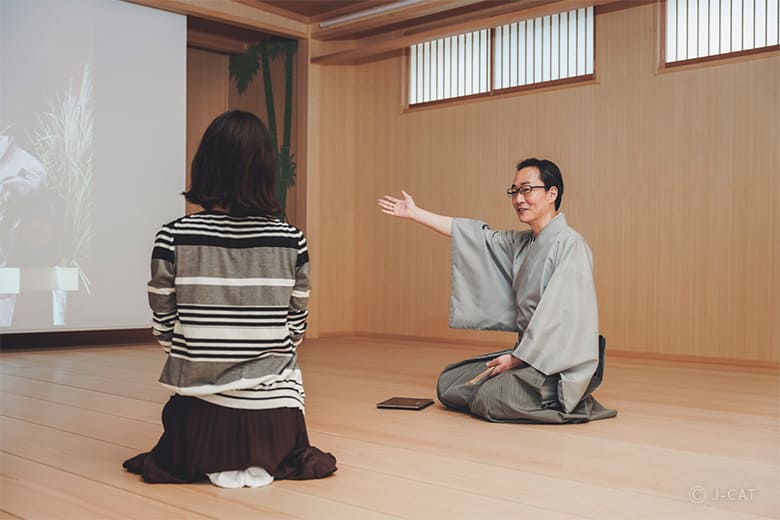
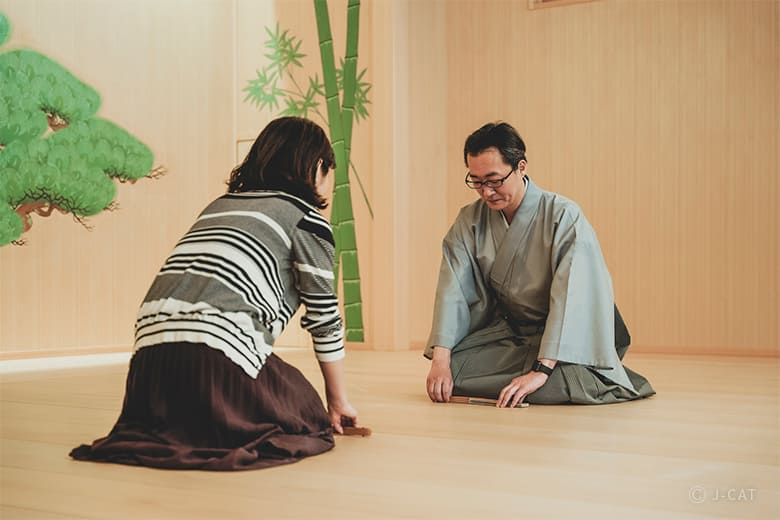
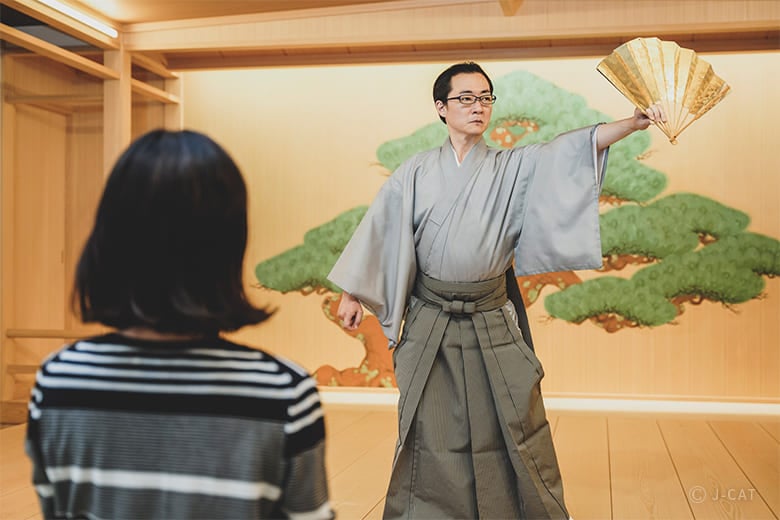
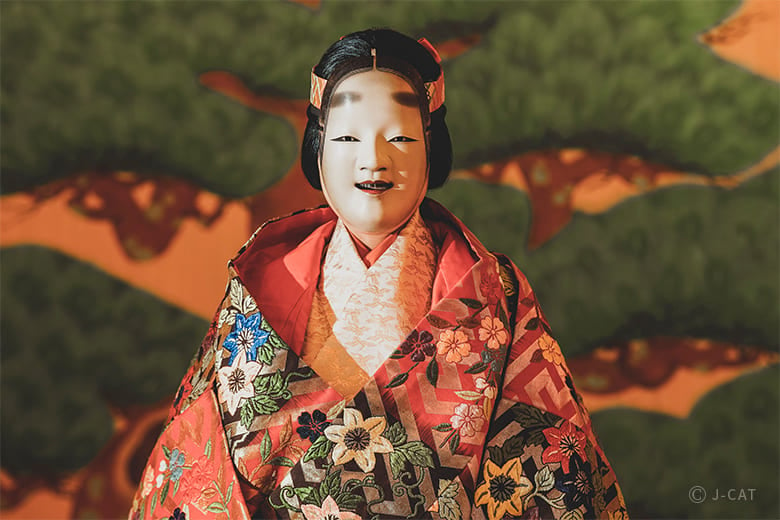
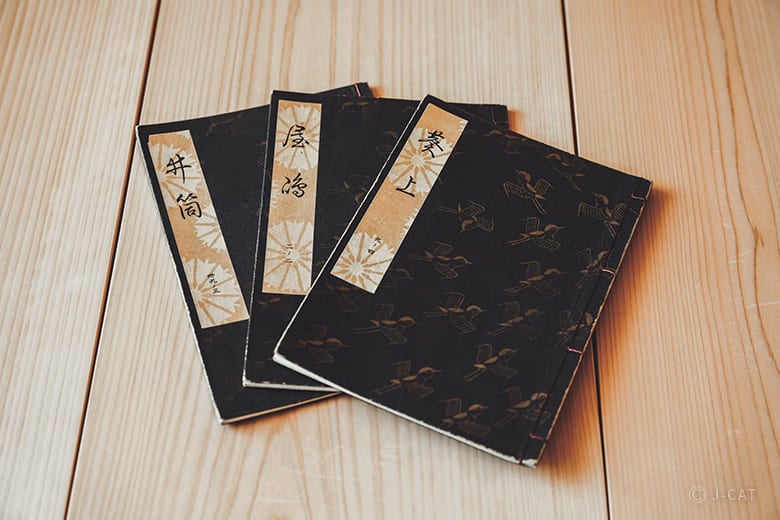
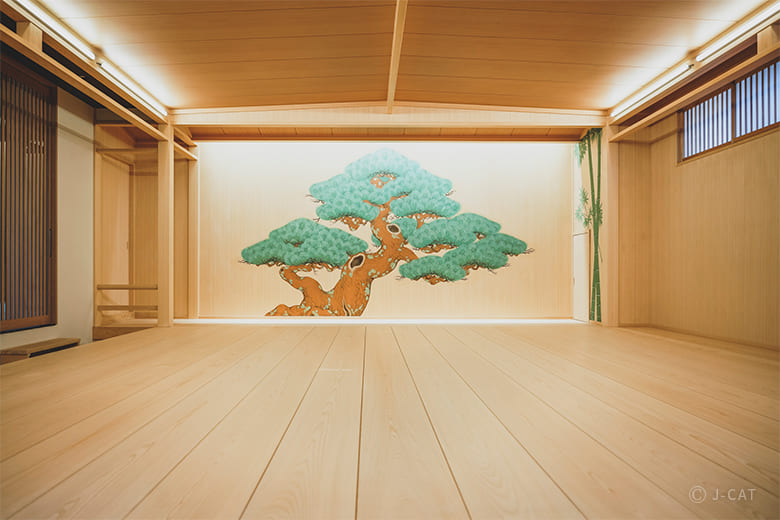












Overview
Setagaya Nagayama Noh Stage sits in a sleepy residential neighborhood a short walk from Setagaya Kaminoge Station. Inside, glimpse the world of Noh through renditions of familiar epics such as The Tale of the Heike on performer Keizo Nagayama’s home stage. Enjoy a private performance of Nagayama’s shimai dance before practicing the dance and its chants for yourself. Enjoy the rare experience of donning a real Noh costume and mask for yourself. Revel in the timeless dramatic power and technique of Noh.
Key Features
・In this exclusive Wabunka plan, take in a private performance by Keizo Nagayama at the Noh actor’s private home stage.
・Learn Noh performance directly from Nagayama himself and experience dressing in a real Noh stage costume and mask. As an option, guests can view four more Noh masks.
・Deepen your enjoyment of Noh through stories based on famous classics like The Tale of the Heike.
Tokyo
120mins
from ¥27,000 /person
1 - 10 participants
Available in English
Cancel free up to 8 days prior
Details
Step into a pair of white tabi socks – and into the world of Noh
Noh actor Keizo Nagayama opened Setagaya Nagayama Noh Stage in 2017 to help spread appreciation for the fun of Noh. Here, minutes from Kaminoge station, he offers Noh performance experiences and lectures on the art. You can feel Noh’s rich history and traditions just the aura of the room: sliding open the door reveals a beautiful stage stretching out on three sides, wafting with the crisp scent of cypress.

Nagayama’s stage, built from cypress sourced from Kohata in Nabari City, Mie Prefecture – birthplace of Noh master Kan’ami
Nagayama belongs to the Shitekata Kanze School of Noh, which has over five generations of history. He has performed not only in Japan but also in such foreign locales as Paris and New York. When he is not performing, he pours his energy into bringing Noh to the general public. In this experience, he hopes to deepen your enjoyment of the art.

Nagayama continues to promote the art of Noh, traditionally passed down from parent to child, in the present day
Noh: a little more knowledge, a lot more pleasure
Noh has a somewhat undeserved reputation for being unapproachable and difficult to understand. But with close ties to such well-known performing arts as Kabuki and Bunraku, and embedded with philosophical and religious themes from both Shinto and Buddhism, Nagayama sees no reason why it should be any more intimidating than flower arrangement or tea ceremony. “You don’t need to know anything to enjoy Noh,” he says, “but even a little bit of knowledge will add a lot.”

Thoughtful answers to any Noh questions
This experience starts with songs and dances associated with The Tale of the Heike, globally well-known as one of the best works of Japanese classic literature.
Noh: literally breathtaking when seen up close
Begin by deepening your understanding of Noh and its source material. See video highlights of Mr. Nagayama’s theater performances, and learn how Noh tells stories.

A projector descends dramatically from the ceiling, beckoning you into the world of Noh with its images.
After this warm-up, enjoy a private performance of Nagayama’s shimai dance. The acoustics of his voice across the stage, his hand-clapped rhythm, the graceful wabi-sabi rustling of the cloth, and the elegance of the dance. The building urgency and awesome sensory rush of the performance right before your eyes will introduce you to the real joy of Noh.

Drink in the unique symbolism and physical expression
Noh: uniquely stylized aesthetics drawing from a dualism of stillness and movement
The time to take center stage has come. Begin by learning kamae (stationary posture) and hakobi (footwork), the foundations of Noh. Progress from there to the forms of Noh expression known as kata. Kata make up the smallest building-blocks of Noh performances, which are strung together into dance choreographies. They are the vocabulary which Noh uses to express the emotion of its stories, and because they are simple, you can easily use them to express your inner passion.

Focusing power in the tanden, also known in Chinese mysticism as the dantian – the ki center of the body
Next, sit face-to-face with Nagayama for vocal training. Key here is upright and straight posture, tucking the chin, and matching the rhythms of chanting with your breathing. Beginners can find it awkward at first, but powering through it to find your stride is liberating and invigorating. Noh’s utai, or chants, do not adhere to an absolute musical scale – so perfect note matching is not a worry.

As a master performer, Nagayama’s utai chants generate such sound pressure that it’s difficult not to involuntarily lean back when you’re in his direct path. It has to be felt to be believed.
The mask and costume help you to focus on your posture
For the climax, don a real Noh mask and costume, used in actual performances. Noh masks have an almost totemic significance to Noh performers, and must be hailed with a bow before being put on. When the mask has been chosen, the costume is chosen to fit the performance and the actor’s intent. Take special note of the design and of how to put it on. When in doubt, don’t hesitate to ask.

Dressing for Noh: usually a 3-person job
Noh costumes weigh an average of 7 to 8 kilograms (15 to 18 pounds). The heaviest ever used reached a solid 20 kilograms (44 pounds). Moreover, the field of view through a Noh mask is much narrower than most expect. Under this weight, without being able to see to the left or right or even your own feet, you will immediately find a new appreciation for the importance of good technique. Souvenir photos are encouraged at this stage.
As an option, guests can view four Noh masks created in the Azuchi-Momoyama period (around 1580) to the Edo period (around 1700). This is a rare opportunity to view Noh masks as valuable as ones displayed in museum showcases, with the added privilege of being able to take photographs.

Gorgeous fabric adorned with clematis tessen flowers and weeping cherry blossoms
A broadened appreciation of Japanese culture through Noh
Noh is an extremely minimalist performance art, carried on as a tradition without major change for over six and a half centuries – which is even more of a feat when you stop to consider just how much the world has changed around it in that time. The simplicity of its physical expressions and mimicry help us in the modern age especially to reconnect with the power of pure imagination.

On stage in perfect stillness, seeing your own overlooked sensibilities anew
Enriching is the time spent attuning yourself to the joys of this classic performance art – beloved by an unbroken line of ancients to moderns like Mr. Nagayama. Nurture the insights and epiphanies that come to you in fragments here, cultivating from them appreciation not only for Noh and Japanese history, but also for the cultural and artistic legacies of ancient peoples everywhere.
Setagaya Nagayama Noh Stage

Setagaya Nagayama Noh Stage
The mastery and experience of Noh actor Keizo Nagayama, second son of Reizaburo Nagayama and leading performer of the fifth generation of the Kanze school. In 2017, on his father’s advice, he founded a private theater at his home as a private atelier and base of operations. To promote the art of Noh, he holds hobby rehearsals and lectures here for the general public. He also conducts professional rehearsals in private, on his own and together with his eldest son Rinzo.
Customer's Voice
A unique experience, a lot of choices and well tailored to make it worth the cost It was a chance to experience and understand more about Japanese culture in a tailored and private setting
J.W. United Kingdom
Very informative. Good care by translator. Interesting topic. Insightful and deep.
O.S. Canada
Definitely worth it. The whole experience is memorable - Nagayama-sensei was very affable. I learnt more about Noh, which I have always been interested in.
S.T. United States
Location
Setagaya Nagayama Noh Stage
Setagaya Ward, Tokyo
Request for booking
Select first preferred date (JST)
January 2026
Sun
Mon
Tue
Wed
Thu
Fri
Sat

Instant Booking

Request Booking

17
Full

17
Unavailable
Tokyo
120mins
from ¥27,000 /person
1 - 10 participants
Available in English
Cancel free up to 8 days prior
Things to know
Contact Us
If you have any questions, please contact us using the form below.
We also accept bookings from corporate clients and travel agencies.